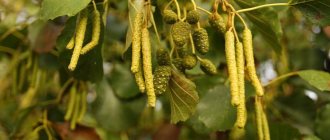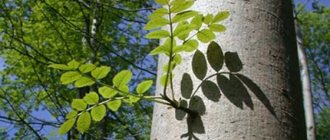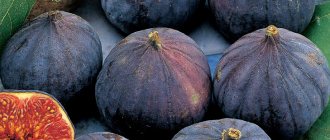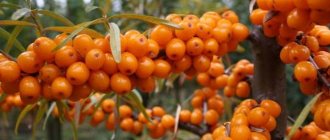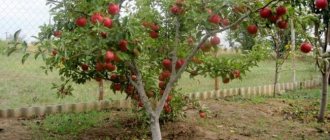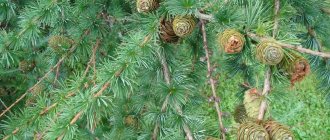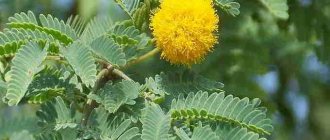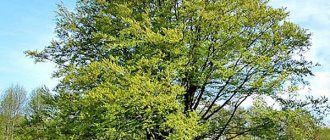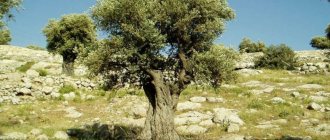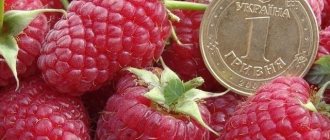Appearance of black alder wood
Description of black alder: the tree can have one or more trunks, and its height is from 20 to 25 meters. The span of an average tree can reach almost a meter. Black alder bark has a rich brown color. Over time, the trunk darkens almost to black.
The leaves of the tree are fleshy, toothed, and folds form on the leaf blades. The branches of black alder are evenly distributed along the trunk, and the crown has a rounded shape. It reaches almost 15 meters in diameter.
Black alder blooms in the spring months and has unisexual male and female flowers. When ripe, the seeds remain in the cones and begin to be sown only in March.
A characteristic feature of European alder: the leaves remain green all the time, even during leaf fall they do not acquire a yellow tint. The foliage of the plant contains a lot of nitrogen, so fallen alder leaves can even be used as fertilizer.
The young cone is initially light green, but after ripening in September or October it acquires a brown tint. Such cones hang on the branches throughout the winter months, and only after the weather warms up in March do they “spit out” the seeds. The seeds are carried by the wind or fall to the ground and are washed away when the snow melts with water.
The tree grows in swampy ponds and fields, sometimes forming entire alder forests. Distribution area: America, European countries, Baltic countries, Caucasus.
There are many beliefs associated with this plant, because the cut wood turns red instead of white. Superstitious people believed that it was blood coming out on the alder tree. This is precisely why the spread of sticky alder wood as amulets is connected. Tree branches can repel insects in the house, and things built from it are durable and do not rot for a long time.
Black alder description
- A large, fast-growing foliage plant - Alnus glutinosa . The trunk is straight or tends upward in a small arc. About 90 centimeters in diameter, with cracks and dark brown bark. Sometimes it can grow with several massive trunks from one hummock, thus creating a clump of trees. This type of growth is characteristic of trees living in ponds and swamps.
- The bark is initially shiny, brown with a green tint, covered across the trunk with light streak-shaped tubercles (lentils). Later it becomes darker, almost black or dark brown with a green tint. Over the years, as it ages, it becomes cracked.
- The crown at an early age is ovoid or pyramidal in shape, becoming rounded over the years. With branches growing almost horizontally from the trunk. Fresh shoots have a triangular shape, sticky, greenish color, the surface is smooth with sparse pile. Large branches have small light-colored bumps on their surface, from which a resinous substance oozes, covering the entire surface with a resinous layer.
- The leaves acquire an ovoid shape, with the sharp end directed towards the stem, are rounded, with a diameter of 4–10 cm, with a well-developed petiole, with a wide-angled cone, and a rounded edge at the end. The surface is smooth and shiny on top, green or dark green in color, the underside is slightly lighter and has fibers at the intersection of the veins. Fresh leaves are sticky. In the autumn season they retain their color until they fall, falling to the ground and turning brown over time.
- Flowers are unisexual. Female with many flowers, united by inflorescences in the form of oval earrings hanging on long stalks in the lower region of the shoots. And men's earrings are smaller, 4–7 centimeters long, appearing on the shoots in their upper part. Staminate flowers are formed in the spring season. Pistillate, on the contrary, in the autumn. Pollination occurs through the air, moving by the wind. For better pollination, flowering begins before the leaves appear, in spring, around April to May.
- The fruits are oval cones, about two centimeters in length. At the beginning of growth they are green in color, and in the process of ripening they become dark. They grow on a long stem, up to 3-4 pieces. The cones inside are filled with flat brown nuts, up to 2.5 millimeters in size. The fruits ripen from September to October.
In the central part of the Russian Federation, ripened cones remain on the alder all winter. And when spring comes, the fruits open and release seeds directly onto the unmelted snow. Small nuts, falling on the snow as they melt, fall into the water and float further downstream. In other cases, they are simply carried away by the wind. Fruits appear almost every year, but large harvests occur every 3–4 years. Young trees growing in open areas begin to bear fruit only after 10 years, but those growing in forests begin to bear fruit after 30 years.
Natural conditions
A moist substrate is best suited for it, but not oversaturated with moisture. Usually the tree can be found near lakes, rivers, and in places with well-drained soil. It is also possible for alder to grow in a swamp.
Popular: Caring for varieties of oriental palm caryota in the home garden
In areas where there are predominantly clay or rocky slopes, black alder does not grow tall. Growing in a certain area, it enriches the soil with nitrogen. This plant loves sunlight and does not freeze in frosts.
In Russian conditions, the tree can be found in almost every region of the country, except the Far North. It can even grow in sand, but the lifespan of the tree is reduced.
Spreading
The range of this plant covers Europe, except its northern territories. It grows in North Africa, Northern Africa and Asia Minor. In Russia it grows in the European part. Settles in moist, drained soils along the banks of rivers, streams and other bodies of water. Photophilous. It can grow on marshy, poor, sandy, rocky, clay soils. Forms pure alder or mixed alder thickets. Grows in the vicinity of ash, oak, spruce trees, birch, aspen, linden. Enriches the soil with nitrogen.
Growing in the garden
The best soil for European alder is a slightly acidic fertile substrate that is well moistened. Despite the fact that the plant rarely freezes, in the first year it is better to prepare it for the winter by covering it with pine paws or straw. The same goes for gray alder.
If you decide to plant it in the garden, then you need a well-lit area. But if there is no such place, then European alder can be planted in partial shade.
But it is not recommended to give it an area where the wind often blows. A characteristic feature of black alder is its shallow root system. Therefore, young seedlings can simply fall to the ground. Seedlings are not planted close; there should be a decent interval between them. It is also not recommended to plant the tree in the shade, because it will quickly dry out and die.
This variety of alder is not considered capricious. Growing it in a garden plot is no more difficult than an ordinary fruit tree. A young seedling can be dug up in the forest or bought in a store.
Before planting a seedling in the ground, its root system is renewed and overgrown shoots are cut off. Before planting, only a trunk no higher than 80 cm should remain. In the first few months, the tree should be looked after more carefully. As it grows, it will strengthen itself and will not cause much trouble.
At this stage, it is important to water the tree in a timely manner, if there is little rainfall in the summer, and to fertilize it. This type of care is only necessary for the first couple of years. After this, all manipulations are reduced to pruning dry broken branches and watering during drought. In suitable conditions, black alder can live for about a hundred years. But there is official information about trees of this variety, which have reached an age of about three centuries.
Popular: Growing delicious weeping mulberry fruits
Habitat
The tree is common in areas that fall in the temperate climate zone. The habitat also depends on the life form of the plant. Therefore, it can be found even in the mountains of South America.
Article on the topic: Siberian larch description and features
Most often, alder grows on marshy soils in forests. Its habitat also extends to the tundra, which is located in the subarctic climate zone.
Diseases and pests
Black alder is susceptible to infection by fungal infections and insects. The natural immunity of the tree does not allow it to cope with them on its own. Treatment for fungal infections is carried out using fungicides, and insects are eliminated with insecticides.
The most dangerous enemies of sticky alder are butterflies and leaf beetles, which damage its foliage and lay eggs under the bark. These insects can be controlled with traps. If the main goal is to collect environmentally friendly raw materials, then it is recommended to treat the tree using folk remedies that do not contain chemicals.
Collection of raw materials
Harvesting of European alder cones begins from the last month of autumn to March. In March, the cones open on their own, so it will no longer be possible to prepare them. They will simply lose all the seeds. To collect plant materials, you need to carefully trim the ends of the branches with cones with pruning shears. After this, the cones are removed from the cut branches. Those fruits that have already fallen from the branches to the ground cannot be used.
The collected cones must be dried on a flat surface. The room for drying collected raw materials should be well ventilated. This could be a porch, a covered shed, or an attic.
On warm days, when there is no snow or rain, it is possible to listen to the buds in the fresh air. But it is necessary to turn over the collected raw materials from time to time. Once the buds have dried, they can be used for about three years.
Areas of application
This plant is used in the construction industry, for the production of furniture and lining. All parts of the plant are used in industry, from the root system to the foliage.
In health care
It contains a large amount of tannins, especially in the buds and bark of the plant. Decoctions and infusions of them can be used to treat inflammatory diseases, as a hemostatic agent for bleeding.
They improve well-being with sore throats and relieve swelling. Due to the antibacterial effect, plant raw materials are used to disinfect wounds on the skin and for pathologies of the gastrointestinal tract. Alder decoctions help relieve pain and spasms.
In the textile sector
In the textile industry, extracts from catkins and plant bark are used to obtain dyes. They help dye leather, fabric and wool black, red and yellow.
Popular: Planting three types of coniferous trees to decorate a site
Construction, furniture production
Due to the rapid growth of the tree, they are often replanted in cleared forest plots. Plants are also used to heat the room. Sticky alder is considered soft and turns pinkish when cut.
If you treat wood in conditions of high humidity, it becomes durable and rots little. Therefore, it can be used for the foundations of structures that go under water, for hydraulic structures and wells. If the tree grows in a humid environment, these properties are enhanced.
Other Applications
Sticky aspen pollen is used to feed fish. It is possible to enrich food for pets and livestock with the help of dried leaves and young twigs. Beekeepers take flower pollen to feed the bees until the main honey plants have yet bloomed. Pollen and resin are subsequently processed into propolis.
Contraindications
Black alder is not toxic, but, like any folk remedy, it should be used only after consultation with your doctor. It is recommended to discuss the duration of treatment and dosage with your doctor. Otherwise, you can harm the body.
Infusions and decoctions of sticky alder should not be drunk while pregnant or while breastfeeding. It should be used with extreme caution by people who have diagnosed kidney and liver pathologies.
Currently reading:
- Basic technologies for growing and caring for peas
- Planting to decorate the site with three types of coniferous trees
- Timely application of dolomite flour for the harvest
- Confidentiality
Share the news on social networks
About the author: Lyudmila Vasilievna Nosikova
Agronomist of the state agricultural enterprise "Garovskoe" of the Khabarovsk region of the Khabarovsk Territory.
